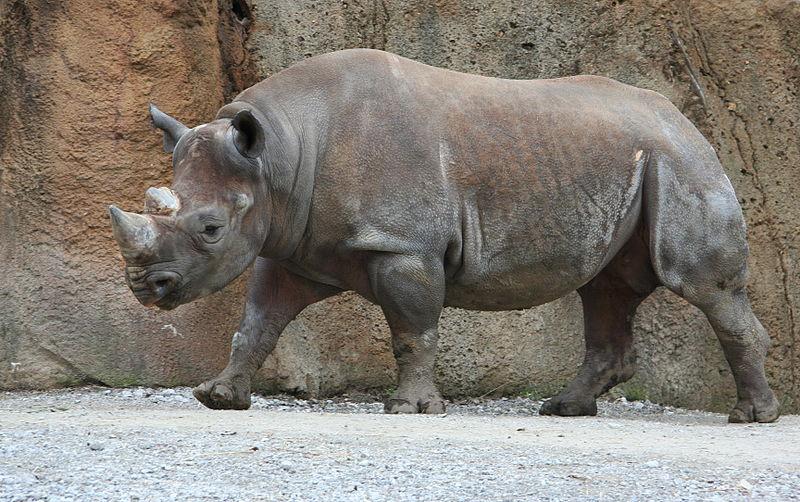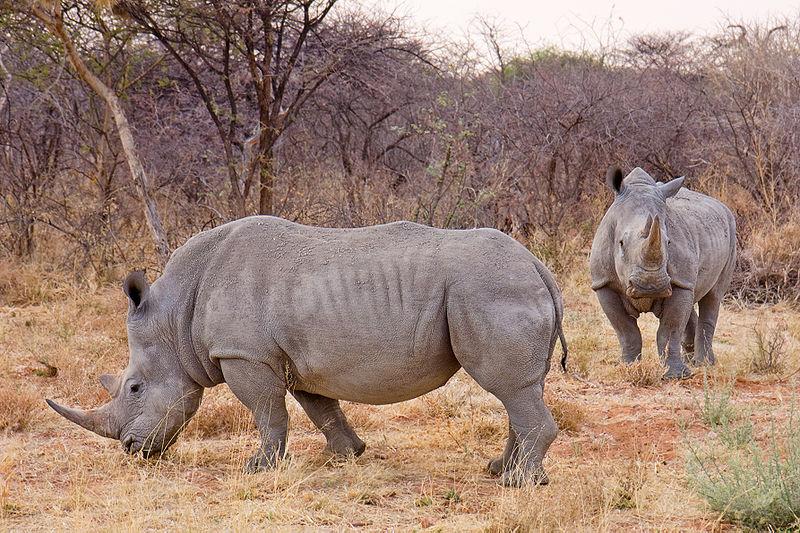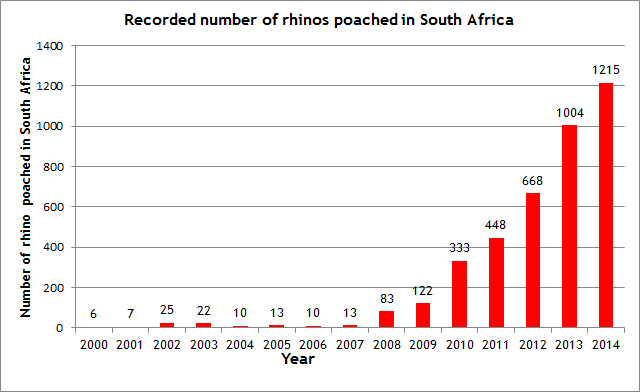Could 3D Bioprinted Rhino Horn Alternative Save the World’s Rhinoceros Population

We have a problem. Human beings are greedy. Perhaps it is Charles Darwin’s ‘Survival of the Fittest’ playing out in a real world scenario. Whatever it is, it is leading to many species of wildlife becoming extinct and others becoming critically endangered. One of these animals is the rhinoceros, a mammal which is hunted exclusively for its horns.
The demand for rhino horns has led to many species becoming critically endangered, with some species unfortunately becoming totally extinct. Rhino horns serve many different uses, including their use as handles for jambiya daggers, which are given to Muslim boys in Yemen when they turn 12-years-old. Rhino horns are also commonly used for intricate carvings which are coveted by wealthy individuals around the world. In some cultures the horns are ground up into a powder which is believed to be a ‘cure all’ for various ailments and diseases. Science has proven this to be completely and utterly ridiculous, but in some cultures traditional supersedes science.
The demand for rhinoceros horns has become so great that they are commonly sold on the black market for a staggering $30,000 per pound. The average rhino horns weigh around six to eight pounds, meaning one single poaching of a rhino could easily bring in hundreds of thousands of dollars. This is a problem, and it’s a problem that must be solved.
Thanks to a relatively new Seattle based startup called Pembient, there may be a solution on the way.
“We are leveraging advances in biotechnology to fabricate wildlife products, such as rhino horn and elephant ivory, at prices below the levels that induce poaching,” the company explains. “Our goal is to replace the illegal wildlife trade, a $20B black market, the fourth largest after drug, arms, and human trafficking, with sustainable commerce.”
Co-founded by Matthew Markus and George Bonaci, the idea is based on bioengineering rhinoceros horns in a lab. Markus originally got the idea over a decade ago, but had been putting off doing anything with it until about a year ago when he pulled out a notebook and began conjuring up a business plan.
So far the company has been successful in creating an imitation rhino horn powder, which they have plans to market as a substitute for the medical uses the horns are utilized for. They are now investigating the possibilities of creating full, lab-grown/printed rhino horn in order to provide an alternative for those individuals who are willing to either spend a fortune on the horns or kill a rhinoceros themselves. One method that they are currently investigation is the 3D printing of replica horns, made of the same biological substances that the real horns are made of.
“We surveyed users of rhino horn and found that 45% of them would accept using rhino horn made from a lab,” explained Matthew Markus, the CEO of Pembient. “In comparison, only 15% said they would use water buffalo horn, the official substitute for rhino horn.”
We’ve previously reported on a company called Modern Meadow that plans to 3D print meat and leather, using specialized bio-printers. Other companies, such as Organovo are working on 3D printing working human organs for implantation. If these things can be done, there is no reason to second guess the possibilities of 3D printing biological replicas of rhinoceros horns.
“We know that creating a substitute product won’t eliminate poaching by itself, but it’s one piece we need to give a try,” Markus tells takeapart. “We know people are skeptical of this at first, but we believe in what we’re doing, and why we’re doing it, and we’re running out of time to do it.”
 If successful, Pembient may single handedly be able to prevent the extinction of not just critically endangered rhinos, but of other endangered animals as well, which are poached for their valuable resources. These animals include elephants for their ivory, tigers for their bones, and pangolin for their scales.
If successful, Pembient may single handedly be able to prevent the extinction of not just critically endangered rhinos, but of other endangered animals as well, which are poached for their valuable resources. These animals include elephants for their ivory, tigers for their bones, and pangolin for their scales.
It should be interesting to follow the progress that Pembient makes, to see if they can figure out a reliable method for bioengineering rhino horns in a lab. Will 3D printing be the method they ultimately choose for doing so? I am intrigued to find out.
What do you think about the possibility of 3D printing rhino horns? Would this be a solution to solving some problems for the world’s endangered species of rhinoceros, or will greed still conquer all and society ignore the synthetic for the genuine thing? Discuss in the 3D printed rhino horn forum thread on 3DPB.com.
Subscribe to Our Email Newsletter
Stay up-to-date on all the latest news from the 3D printing industry and receive information and offers from third party vendors.
Print Services
You May Also Like
3D Printing Financials: Prodways Ends 2024 with a Profit
After a tough couple of years, Prodways (EPA: PWG) is starting to bounce back. The French 3D printing company finally made a profit in 2024, improved its operating performance, and...
Blue Origin & Auburn University Use EOS M290 to Study Copper 3D Printing
Blue Origin, the commercial space company built off of investments from Amazon founder Jeff Bezos, has donated two EOS M290 powder bed fusion (PBF) printers to Auburn University’s National Center...
Rocket Lab to Acquire Restructured Laser Communications Provider Mynaric AG
Rocket Lab USA, the Long Beach-based, end-to-end space services company that specializes in producing rockets with additive manufacturing (AM), has announced plans to acquire Mynaric AG, a German provider laser...
3D Printing Financials: Stratasys Ends 2024 with Cost Cuts and Growth Plans
Stratasys (Nasdaq: SSYS) has wrapped up 2024 with stronger margins but a full-year net loss. The polymer 3D printing leader navigated a year of economic headwinds, restructuring efforts, and shifting...





























